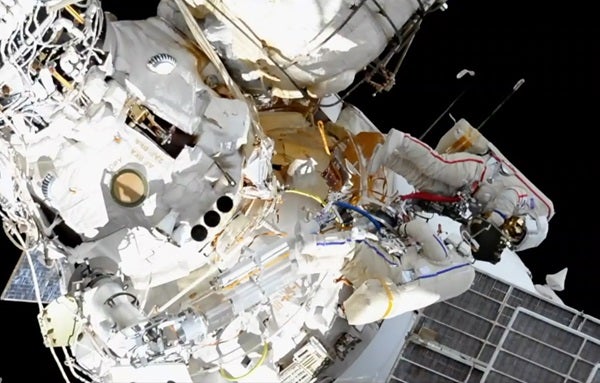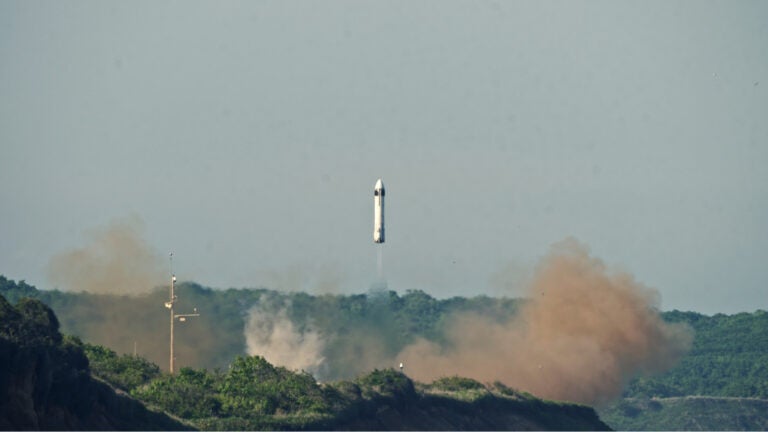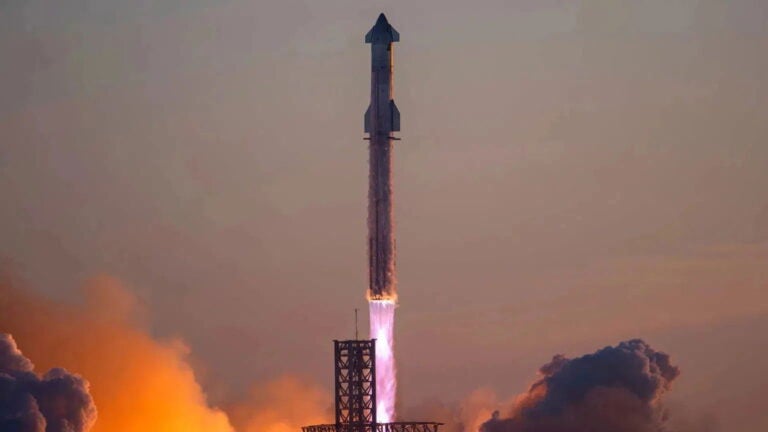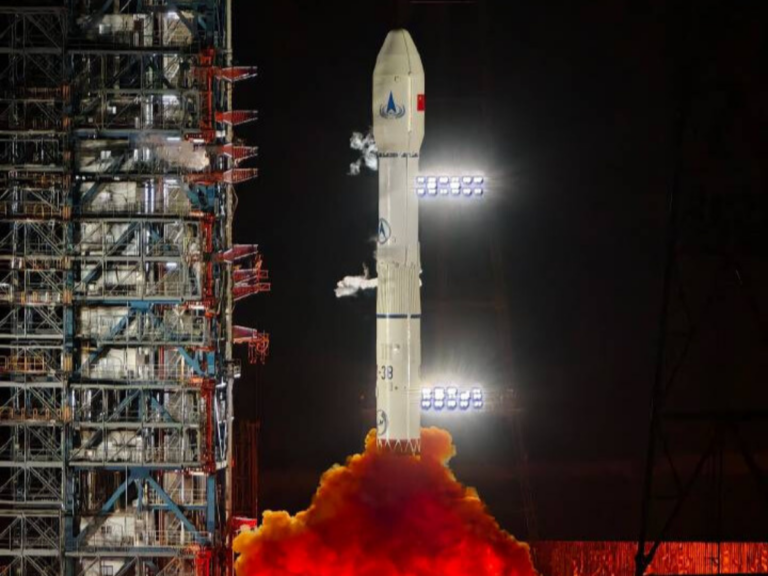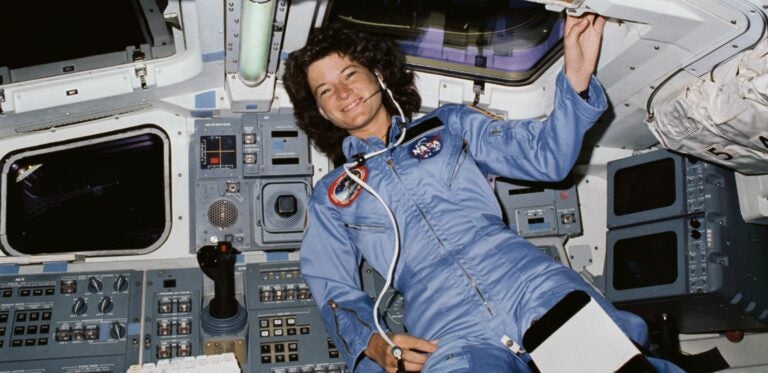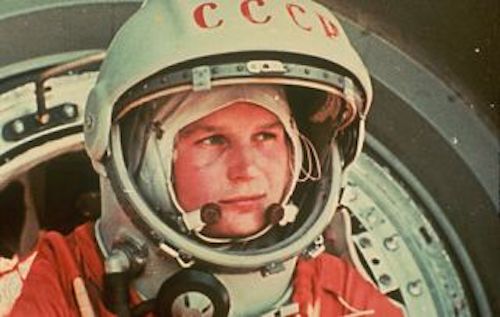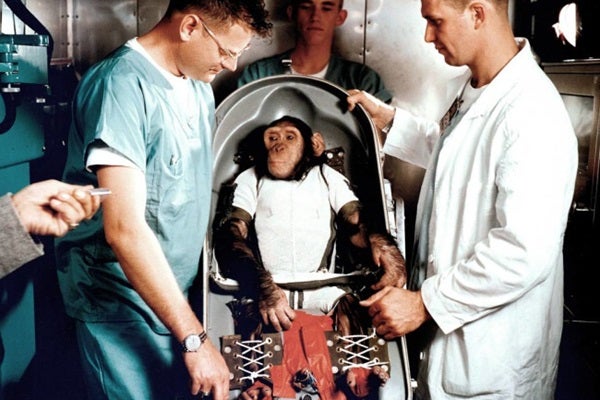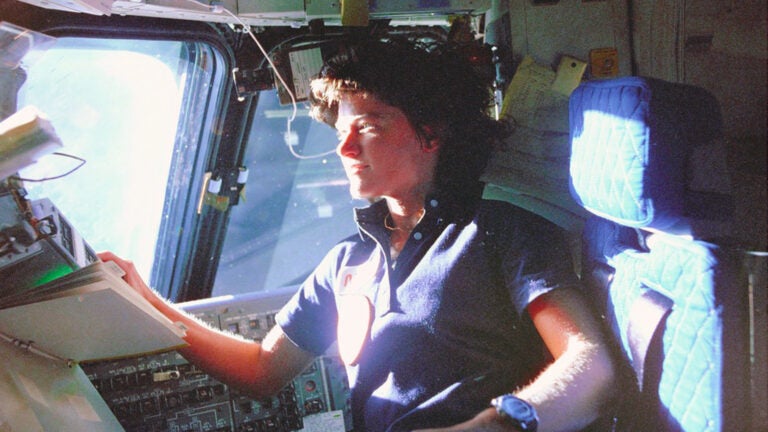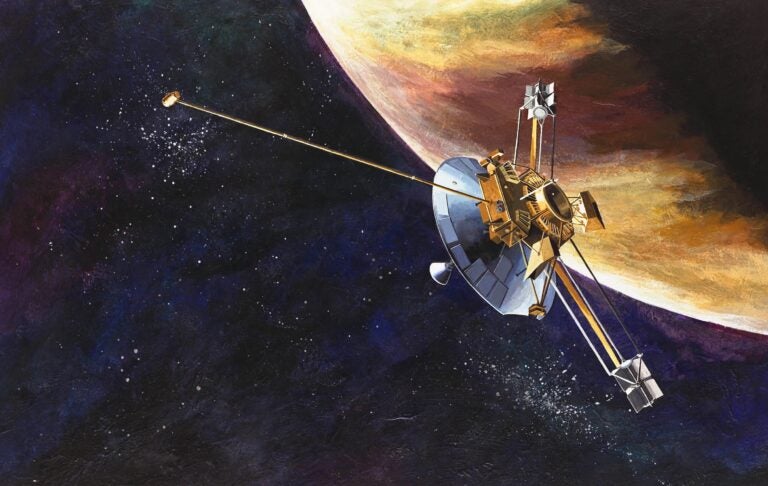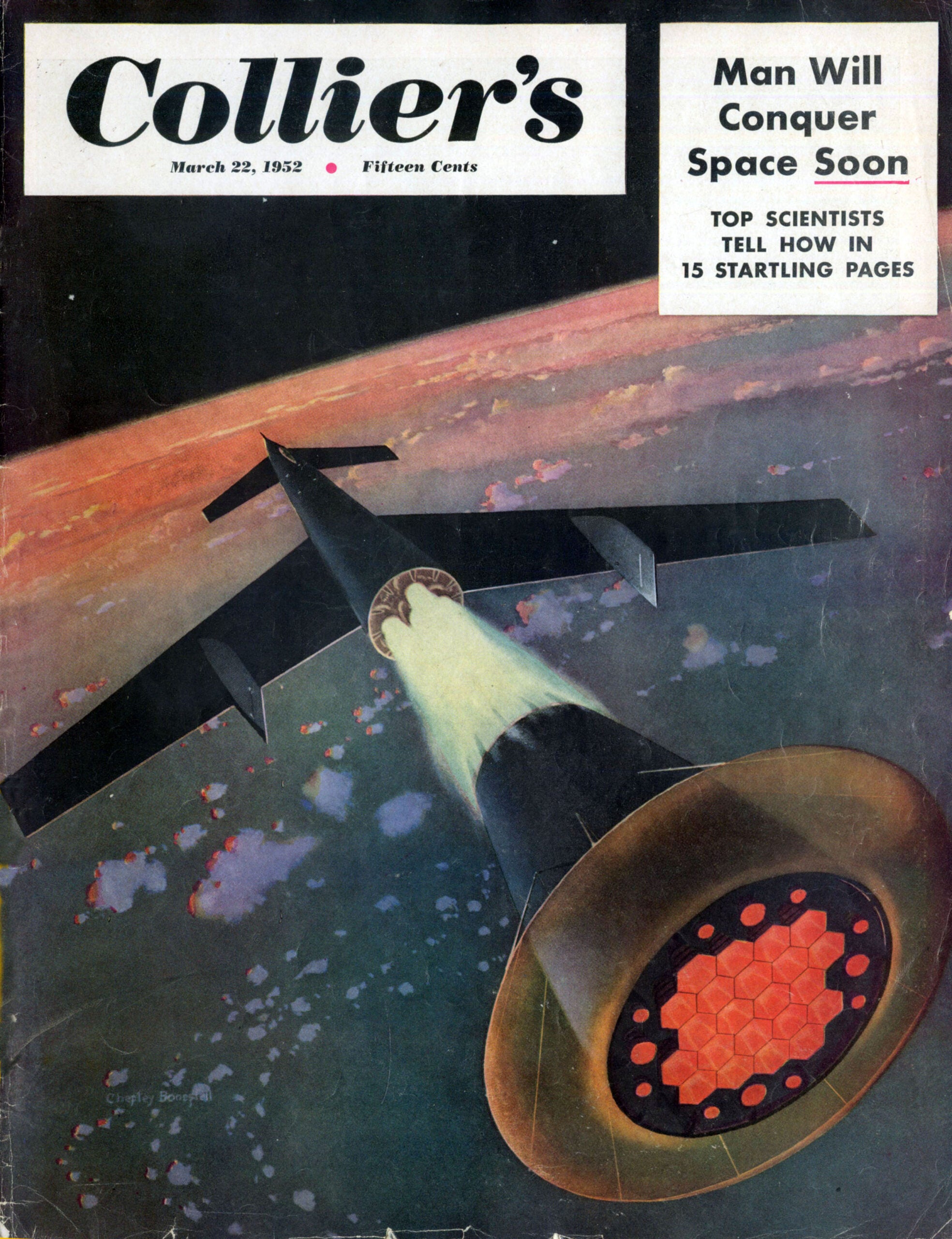While the orbiting complex already has one International Docking Adapter (IDA) available for such vehicles — indeed, an uncrewed test Crew Dragon attached to it back in March — NASA said that two docking options will allow for more flexibility. Thanks to the new adapter, IDA-3, the ISS can now allow two commercial vehicles to dock simultaneously.
The new adapter is “a really necessary step,” said Kirk Shireman, ISS program manager, in a televised briefing August 16. “If we have four U.S. crew members [on board] and we only have one docking port,” he added, “we’d have to pile everyone in the vehicle and leave … before the next one can come in.”

Bringing the universe to your door. We’re excited to announce Astronomy magazine’s new Space and Beyond subscription box – a quarterly adventure, curated with an astronomy-themed collection in every box. Learn More >>
Cable Installation
The 6 hour 32-minute spacewalk also required a complex set of cabling installation procedures from Expedition 60 astronauts Nick Hague and Drew Morgan, who are both on their first mission to space. Hague completed the third spacewalk of his six-month mission, while Morgan — who arrived on station a few months after Hague — was on his first venture outside.
Hague first retrieved a portable wireless camera to place near their work site, so that Mission Control could keep a close eye on their work. Morgan moved a foot restraint to for better leverage while doing the cabling work. Then they took turns free-floating and working inside the foot restraint to install the cables, which will supply power and data between IDA-3 and a pressurized mating adapter that connects to the rest of the space station. NASA spokesperson Gary Jordan told Astronomy that the cables were already partially deployed during Expedition 46 and 48 spacewalks in 2016, including an August spacewalk where astronauts Jeff Williams and Kate Rubins assisted in the installation of IDA-2.
Following installation of IDA-3’s cables, Morgan and Hague added reflectors to serve as a visual aid for the vehicles approaching the space station. The spacewalk wrapped up ahead of schedule, despite concerns that some of the cables were expected to be a little rigid — after all, those cables have been sitting on the outside of the space station for five years.
“We expect them to be difficult to manipulate and route … mostly due to the fact that they’ll be stiff and want to retain the coiled shape,” said Alex Kanelakos, the lead spacewalk officer, in the same briefing. The astronauts, however, encountered no issues with the cables.
The IDAs are meant to replace older docking ports that were used for the space shuttle, which ceased operations in 2011. The first adapter, IDA-1, was lost in a catastrophic SpaceX launch failure in 2015.

